
SPECIAL CORRESPONDENT Katie Pesznecker just returned from a Mediterranean Cruise aboard the “Norwegian Getaway”. The ship called in many ports in both Greece and Turkey. This is her report.
Traveling to foreign countries can be stressful, expensive and complicated. One way to simplify logistics, manage costs, reduce front-end trip planning and streamline your overall experience is to go via a cruise ship. My husband and I recently enjoyed a week-long Mediterranean cruise that called on six ports between Greece and Turkey. This adventure encompassed seven days and nights of ancient ruins, aquamarine seas, exotic landscapes and great food and wine.
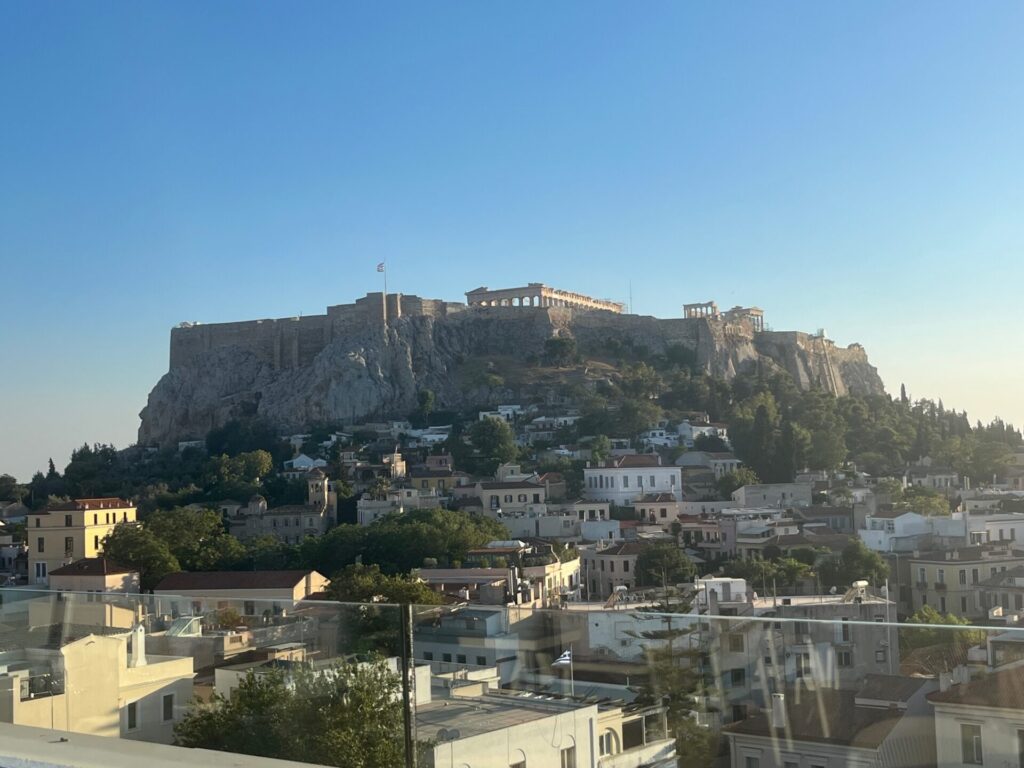
Our ship both departed from and returned to Athens, so we arrived a day early, and stayed at the Central Hotel in the Plaka district. This is the oldest neighborhood in Athens, spread around the base of the iconic Acropolis and its temple ruins. Our hotel, like many, featured a rooftop bar with views of the Acropolis, which is where we began our night before exploring the area.

The Plaka boasts narrow cobblestone streets lined with shops, occasional ancient ruins, and plenty of cafes and tavernas. Trip Advisor pointed us to the Victory Café run by a charming Greek couple.

Our lively experience at this tiny, open-air café included pork gyros (the traditional choice), a chicken souvlaki platter, a Greek salad with juicy tomatoes, cool cucumber and salty chunks of feta, and complimentary baklava sticky with honey. I sipped refreshing Ouzo while Joe enjoyed a local beer, and the owners passed out complimentary shots to toast the evening’s conclusion.

In the morning, we arrived at the Panathenaic Stadium when it opened at 8 a.m. The ancient stadium here was excavated and restored in the 1800s, and hosted the first modern Olympics in 1896. An audio tour leads you on an interesting walk through the world’s largest entirely marble stadium.
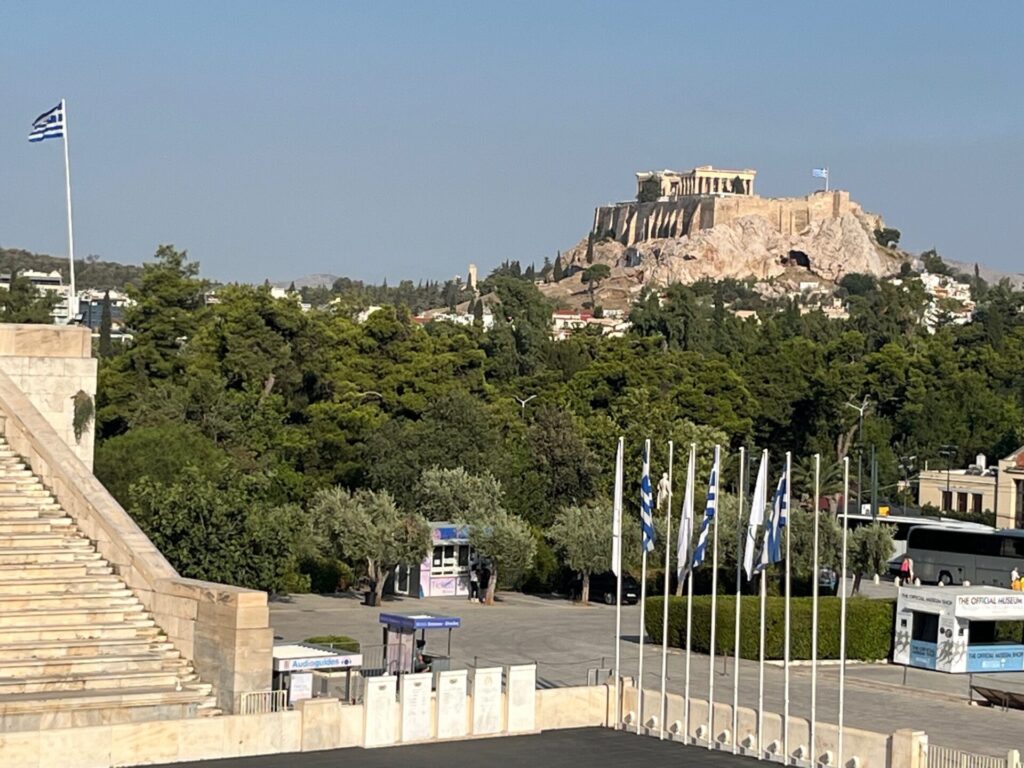
Port Piraeus was a quick Uber from the Plaka. Our ship, the Norwegian Getaway, had 18 decks, and capacity for nearly 4,000 passengers and 1,640 crew members. It was refurbished several years ago, and still feels modern, classy and clean, with a fun pool area, many thematic restaurants, shopping areas, outdoor bars, a spa and gym, and a casino included among its many amenties. Our portside balcony room on an upper deck was incredibly comfortable, kept surprisingly cool in the oppressive Mediterranean heat.

A note on that heat: July in the Mediterranean is unbelievably hot. Our arsenal included linen clothes, copious sunscreen, rechargeable neck fans, handheld folding fans, geeky SPF hats and vizors, and lots of water. Though avoiding sunburn, we were excessively sweaty for a week straight. That’s par for the course during July and August in this part of the world when it’s peak tourism season. Locals we met advised returning in milder spring or fall.
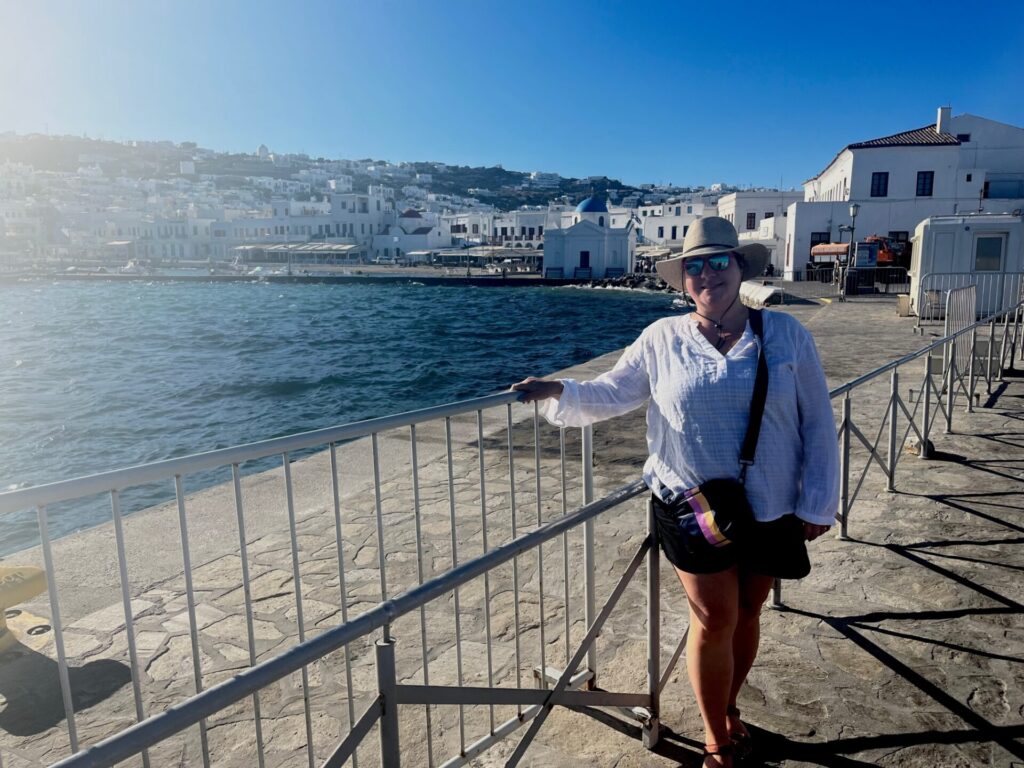
Our first port: Mykonos! The ship docked at the “new port” and we walked off right away, among a handful of people on the first water taxi of the day (2 euro), cruising along the stunning shoreline to the old town.
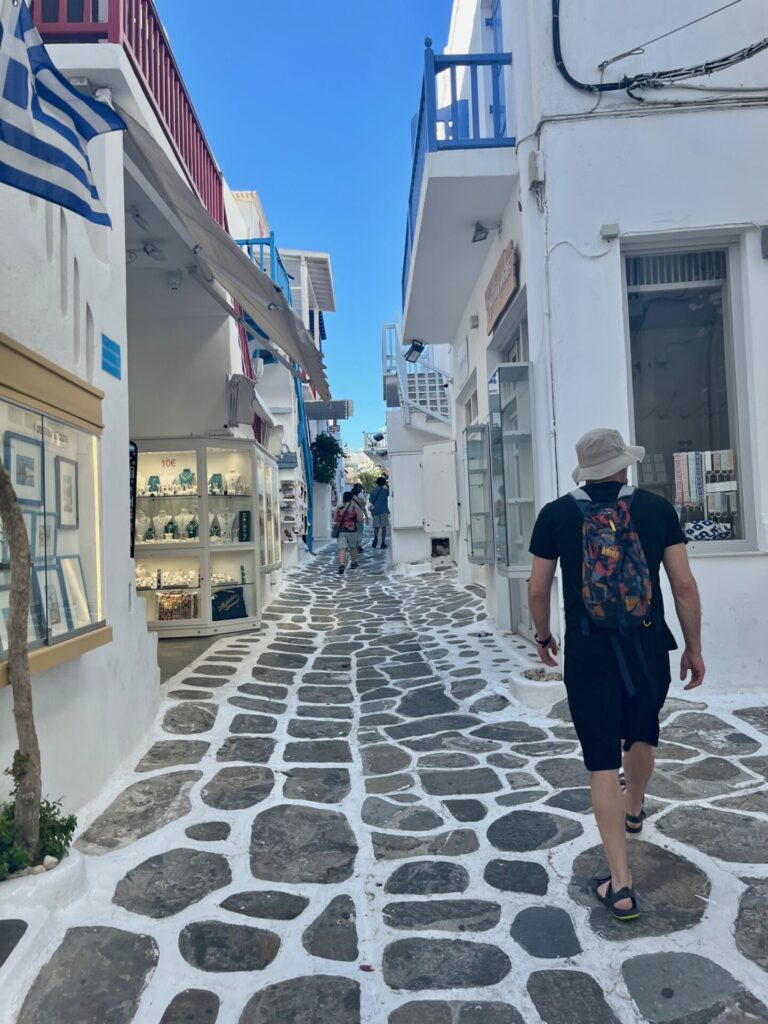
Mykonos in the morning was quite the lovely and romantic introduction to Greece. The town – known in summer for late-night parties and clubs and DJs – was just awakening. Men played chess by the harbor. Shopkeepers swept the iconic broad gray cobblestones outside their stores. Patrons at open-air cafes sipped coffee. White and deep blue architecture gleamed in the morning sunshine.

We spent hours exploring mazes of old cobblestone roads, popping into shops, and stopping at one café for fresh ginger lemonade, a homemade sour cherry juice, and just-from-the-oven cheese pie, or tiropita. It was one of my favorite foods of the trip – simple, rustic, savory, with rich feta between layers of crispy phyllo.
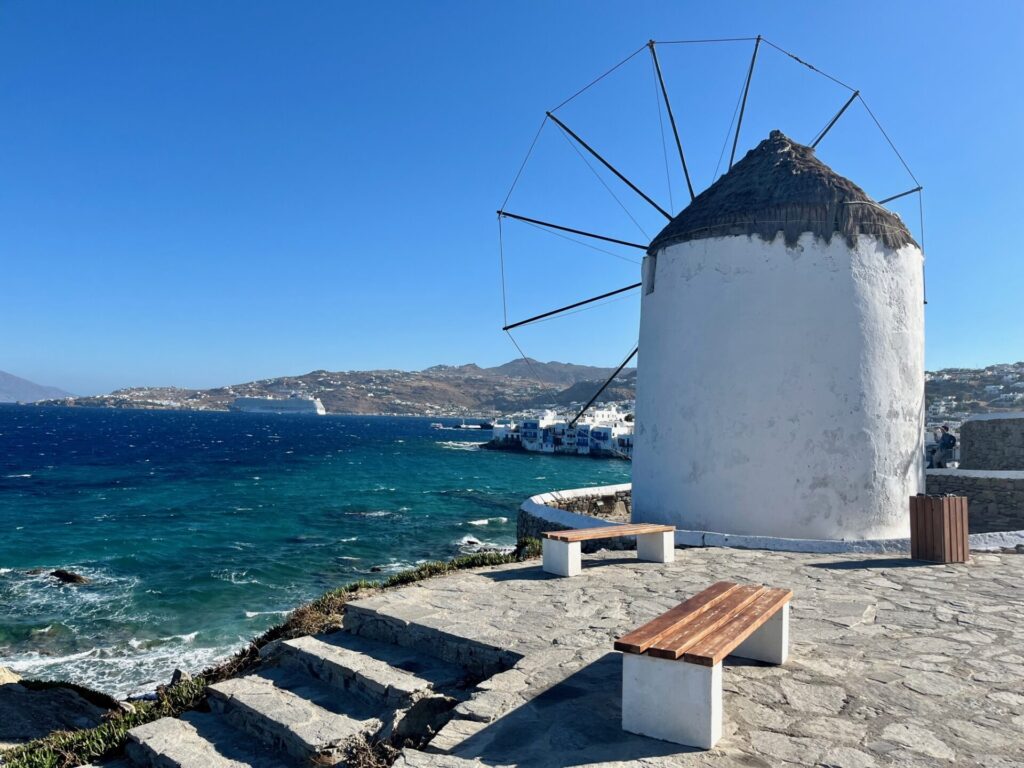
We also found our way up the hill to the iconic row of 16th Century windmills that have long stood sentry over this island. Coming ashore first thing in the morning was a smart move; crowds were growing by the time we returned to the ship. But early in the day, exploring the winding old streets and windmills made for a peaceful and gorgeous experience.

Our next port: Istanbul, where we spent two days and nights, because that’s what you do when you find yourself in the world’s 15th-largest city. With one foot in Europe and another in Asia, Istanbul is beautiful and bustling, its skyline punctuated by the domes and minarets of its 4,000 mosques and an ending impressive display of red rippling Turkish flags. Istanbul cruise ships are served by the Galataport terminal, a massive gateway to the city that opened just a few years ago. Its spacious underground includes security checkpoints and customs clearance points, shops and toilets, and a sprawling garage for tour buses.
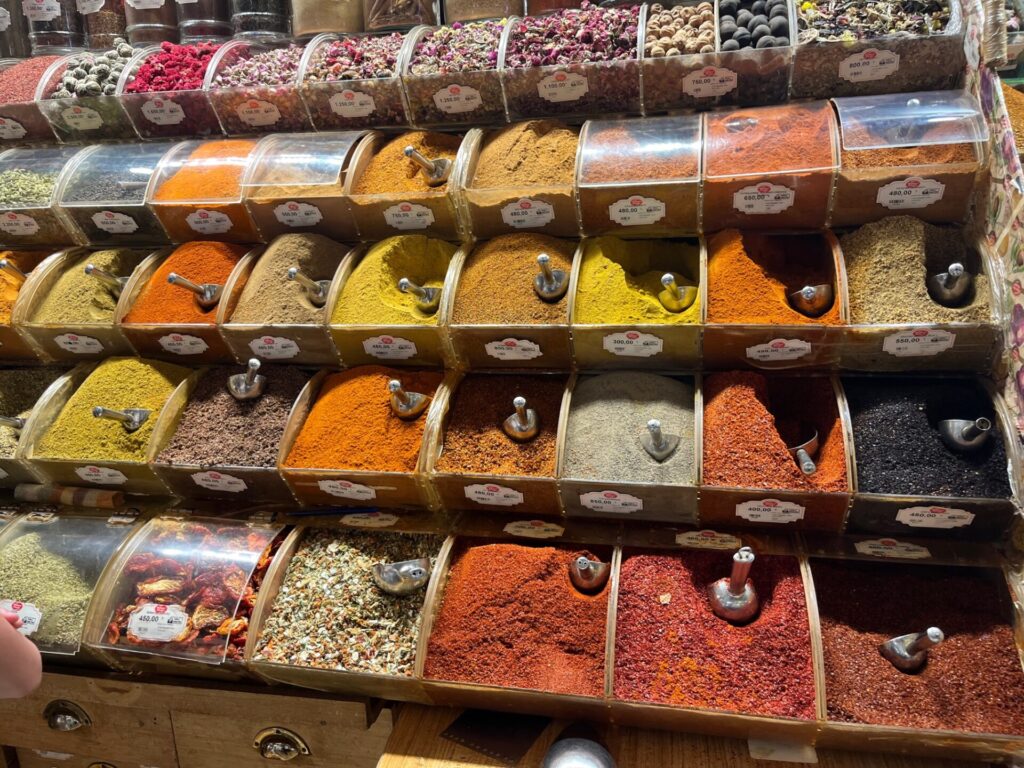
On our first day in Istanbul, we took a cab to the Grand Bazaar area of the city and found our way to the Spice Market. The Spice Market is just one adjacent feature of Istanbul’s famous Grand Bazaar complex, which is one of the oldest and largest covered indoor markets in the world. There are over 4,000 shops in the market and its vicinity. Logging at least 250,000 visitors a day, it was named the most visited tourist destination it the world in 2014 with more than 91.2 million visitors.

After the Spice Market, we found a small café in an alley and enjoyed Turkish coffee with baklava before making the walk back to our ship.

Day two in Istanbul, we joined others on a day-long tour of the city. We began at the Blue Mosque, named for its exquisitely hand-painted and blue-themed tiles that dominate the cavernous interior.
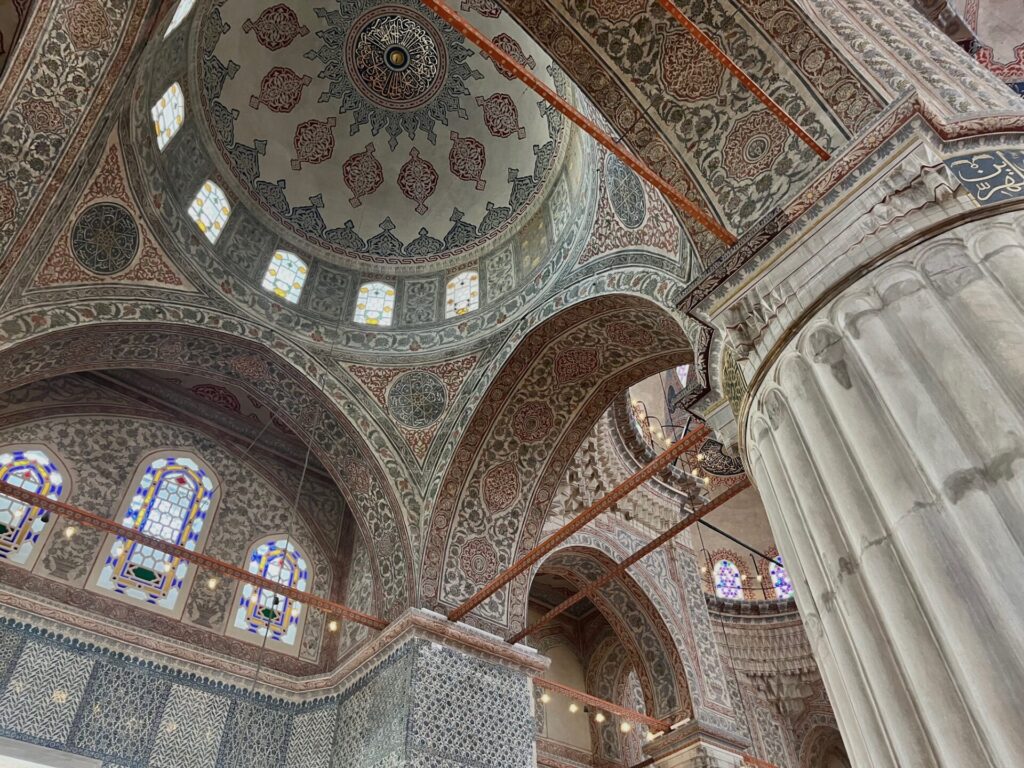
Mosque visitors must cover shoulders and knees – and women must also cover their heads. Those not properly clothed are provided clothes and wraps at the entry point.

From the mosque, we hit up the Grand Bazaar, with more than an hour to explore on our own. With our friends Kenneth and Ashley, we bartered our way through the fake designer area of the market, with lovely and convincing copies of everything from sunglasses to purses to shoes.

Us gals each bought sunglasses. We sampled street food. And we ended up following an eager shopkeeper down a stairway in a nondescript building. It was like something out of a movie: one minute we were on a busy street; the next, we were in an airconditioned underground show room surrounded by rows of the most gorgeous shoes imaginable.
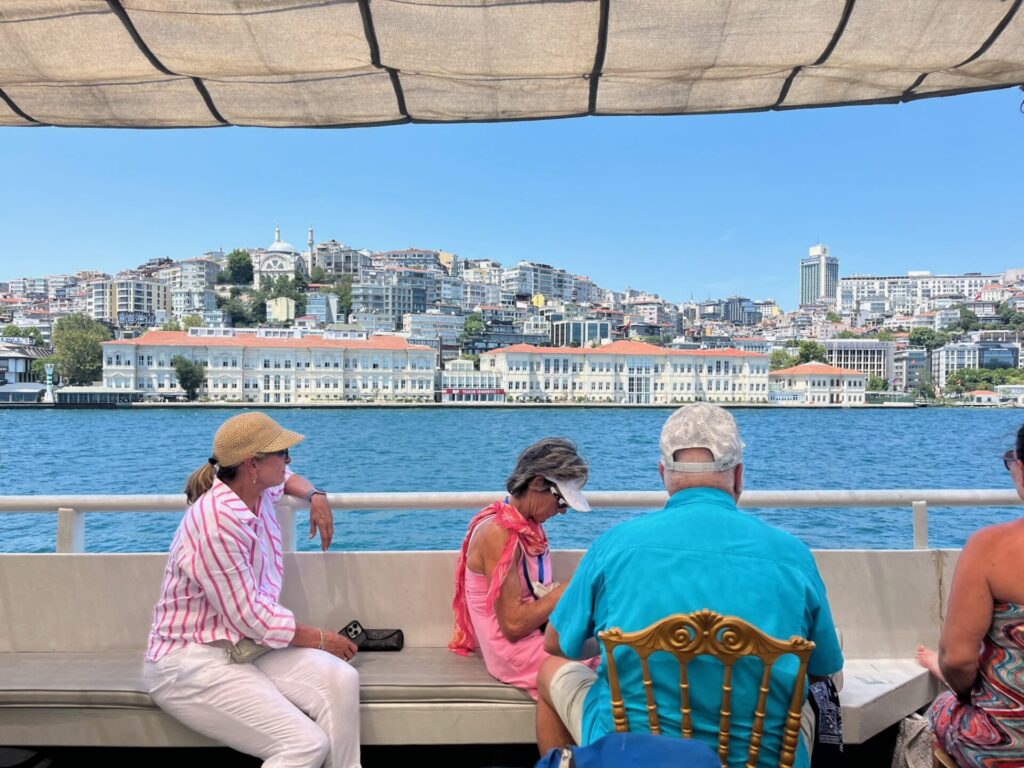
Our Istanbul tour ended with a boat trip on the Bosphorus River, which connects the Black Sea to the Sea of Marmara and forms one of the continental boundaries between Asia and Europe.
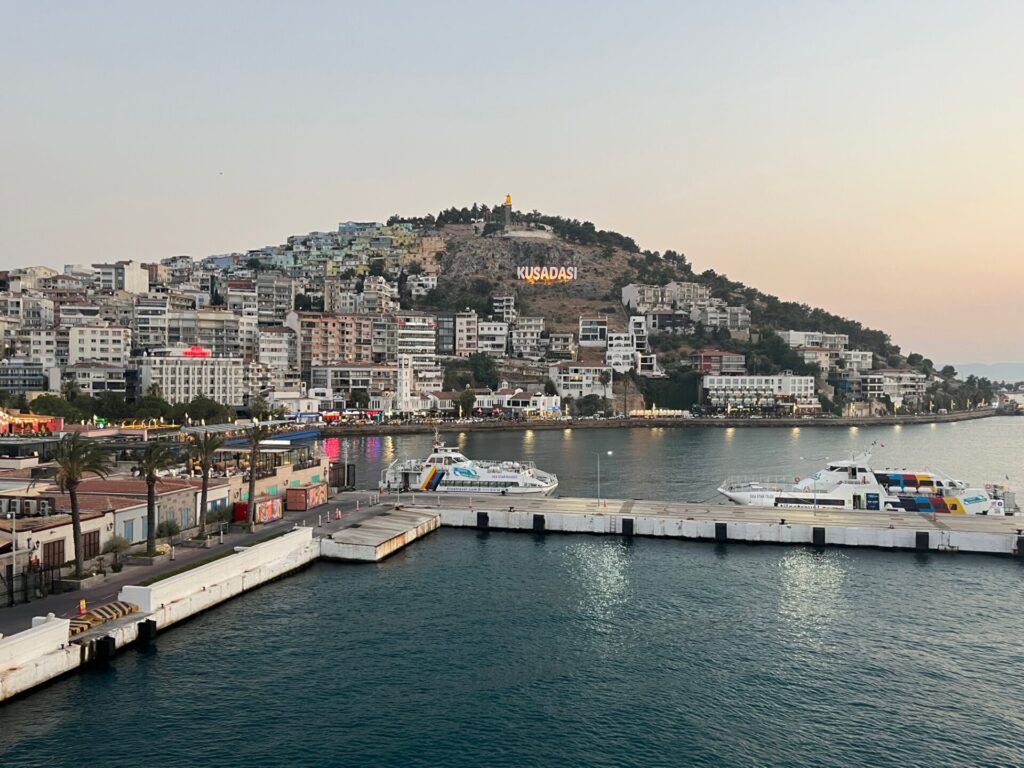
The next day we arrived in our third port: Kusadasi! This Istanbul city is primarily known for the nearby ancient ruins of Ephesus. We booked a private tour in advance through Viator. Our guide, Oscar, ushered us to a waiting (air conditioned!) vehicle with a driver, and we were able to arrive at these famous ruins ahead of the crowds.

The price of the private tour and Ephesus entrance ticket was comparable (and even cheaper than) the cruise ship-organized outings, and it was such a treat to have our own guide answer all our questions, create an itinerary exactly to our liking, and be such a fantastic and friendly resource of local knowledge.

If you find yourself in Kusadasi and have an interest in ancient civilizations, don’t skip Ephesus. In its heyday, it was the third-largest city in the Roman Empire, and to date, only 30 percent has been excavated.
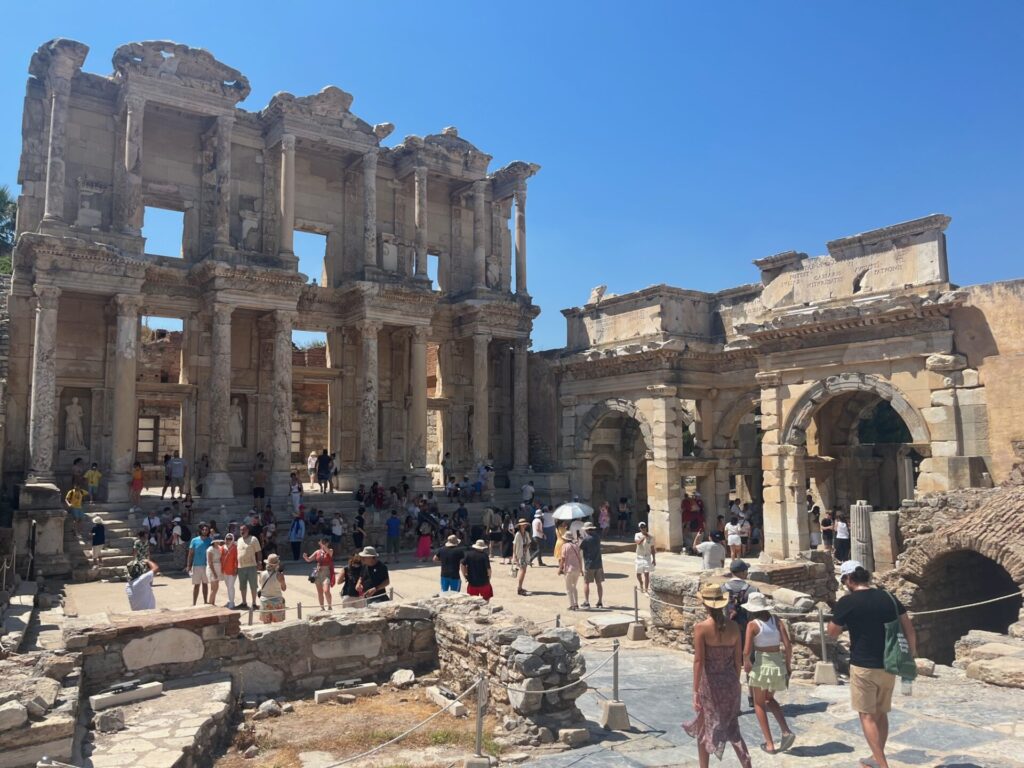
It’s sprawl, preservation, and gleaming ruins and promenades designate it an incomparable display of ancient Greek and Roman times. You’ll see many well-excavated temples, carvings, Roman terrace houses, and a giant amphitheater, among its many treasures.

We left Turkey and arrived in our penultimate port: Rhodes! Rhodes, in Greece, was my favorite spot of our trip.
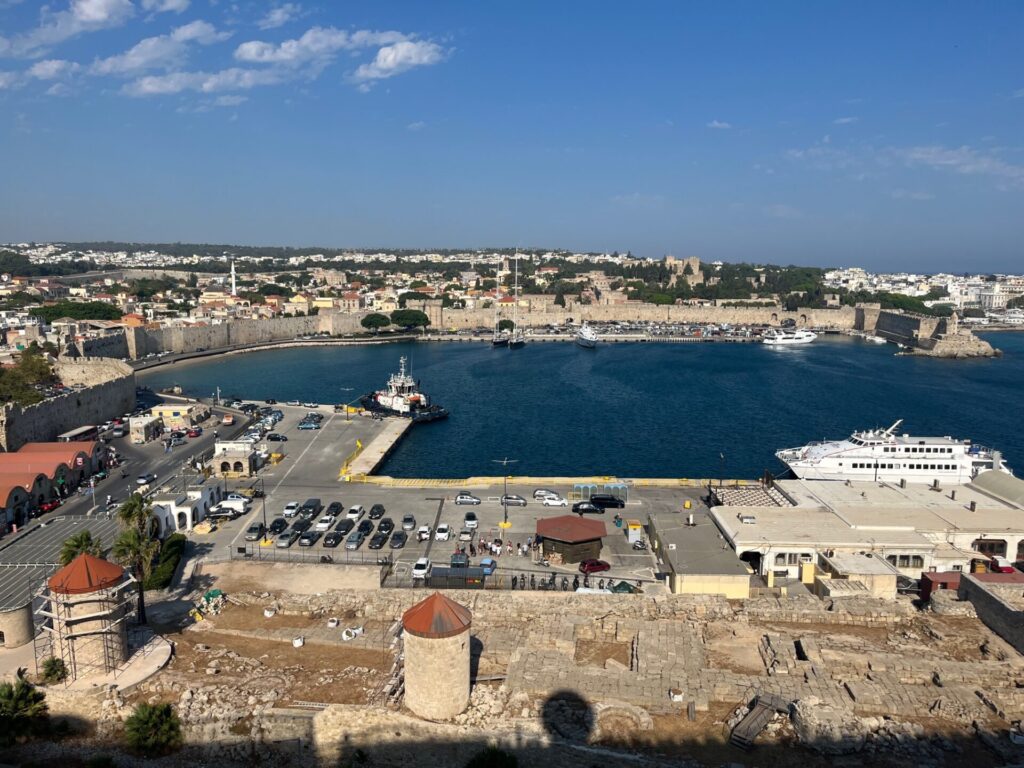
This medieval walled city was so fun to explore on foot. The old stone buildings and arches, stone roads, and worn wooden doorways made for the most picturesque and idyllic setting, and it was incredible to work our way through this web of walkways while remembering it hasn’t much changed in hundreds of years.

We headed away from the crowds and found charming local shops and friendly residents. We stopped at more than one café to cool off with beverages and snacks and bought pottery to bring home and remember our time here. I also bought a beautiful pair of leather slides from the shop where other shoes were being hand-crafted on site. Leather was a prominent shop item in both Greece and Turkey.

Santorini was our final stop of the trip. We were among the first groups ashore, and various points along our organized tour only grew busier as the day progressed. Santorini’s explosive popularity has been the subject of recent media accounts, with cruise ships simultaneously dumping thousands of passengers here a day. There are few options for quiet corners and beating the crowds.
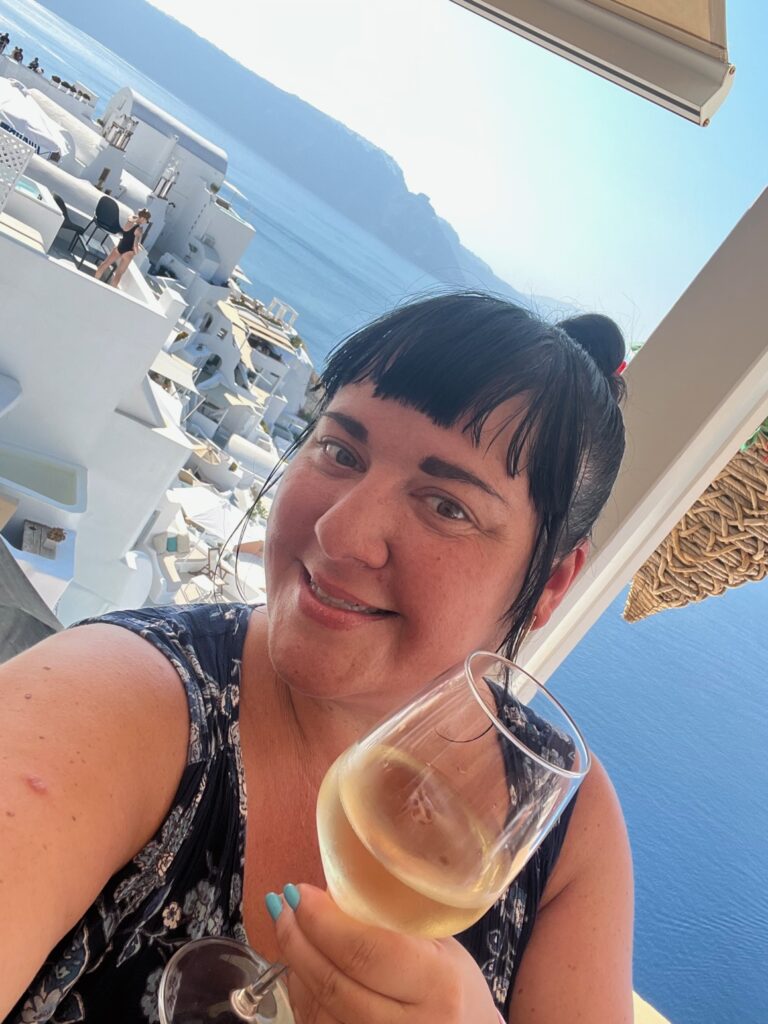
But Santorini is busy for good reason. With its iconic bright white buildings seeming to cling to the sides of tall cliffs, brilliant blue-domed churches, and famous sunsets, it’s cinematic. Our tour included stops in Oia, a mid-day Greek lunch with wine, dancing, and plate-smashing (Opa!) at a beautiful seaside restaurant, and then a final stop in trendy Fira. We scored a table at a café with breathtaking views of the architecture and sparkling blue sea.

From Fira, we had three options to descend to the cruise docks: cable car, donkey, or walking. The cable car wait was 2 hours in the sun. We opted to walk. It was steep, hot, and slippery – so many surfaces in Greece are, and wearing shoes with good traction is essential. When we made it down the hill and back to the ship, that dip in the pool accompanied by a crisp glass of rosé was fantastic.

Cruises aren’t for everyone; but many people claim this is the case without having actually experienced a cruise. You really don’t know if it’s for you until you try it, and you could be missing out on an incredible and convenient way to see special corners of the world. So stay open-minded to this opportunity, especially as a way to simplify and streamline your international adventures. Happy travels!

Share this Post


